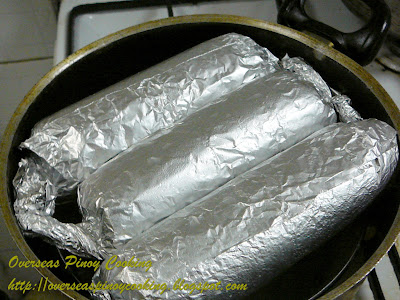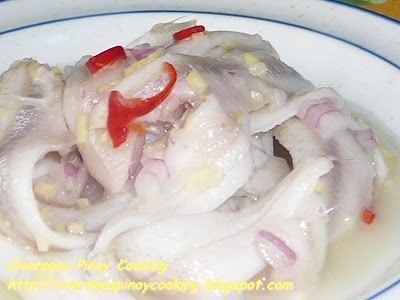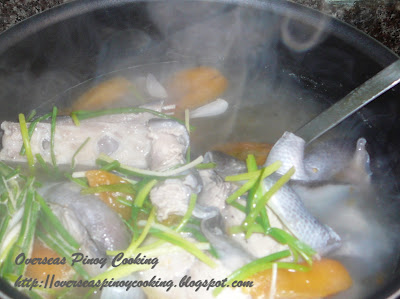
Special
embutido. Embutido is one of the popular dishes that are prepared specially for the holiday season. I have made a post on
embutido recipe a few months back but that version was influenced by the commercial versions that uses hotdog core fillings and aluminum foil wrapper. For my holiday celebration version, I am making an embutido as close, as authentic and comparable to the versions our grandparents used to make the original method of making embutido. For the wrapper I used
sinsal or pork lard leaf as wrapper instead of aluminum foil.
Sinsal is the original wrapper for embutido. For the sausage core filling, I used Vienna sausage it is the original core filling before the coming of hotdogs. For the steaming water, I have added little vinegar, lots of crushed garlic and bay leaf that resulted an
adobo aroma that was infused in the steaming embutido. Embutido is supposed to be serve with banana ketchup, I prefer it steamed for me this is how embutido should be served.
 Ingredients:
Ingredients:150 gram
sinsal, leaf lard
1 1/2 kilo lean ground pork
2 cans Vienna sausage, chopped
1 pc. chorizo de bilbao, chopped
1 small size carrot, finely chopped
2 medium size red bell pepper, roasted and chopped
1 cup grated cheddar cheese
4 small size onion, chopped
1/2 cup evaporated milk
1/2 cup pickled relish
1/2 cup raisins, chopped
1/2 head garlic, chopped
4 pcs. big size egg, beaten
1 tbsp. ground black pepper
2 tbsp. salt
For core filling:6 pcs. hard-cooked eggs, quartered into wedges
2 cans whole Vienna sausage
For steaming:2 tbsp. vinegar
1 head garlic, crushed
3-5 pcs. bay leaf
Cooking procedure:
Wash and drain
sinsal, divide into to make seven pieces of
embutido and set aside. Divide also hard-boiled eggs and whole Vienna sausages into seven portions and set aside. In a big bowl combine all the ingredients and mix until well blended. Divide into seven portions and set aside. Spread out
sinsal wrapper in a big plate. Spread and flatten one portion of the mixture onto the center of
sinsal wrapper. Place one portion of egg wedges and Vienna sausages at the center of each mixture and hand roll until the mixture covers the eggs and sausages. Now roll the
sinsal wrapper into a tightly packed log about 2 1/2” in diameter, seal both ends. Repeat with the rest of the mixture. Pour in 6 cups of water, vinegar, garlic and bay leaf in the steamer and let boil. Arrange the
embutido side by side in the steamer and steam for 45 minutes to 1 hour. Let it cool and slice into rings. Serve with banana ketchup.
Source:
http://overseaspinoycooking.blogspot.com/search/label/Embutido
















































